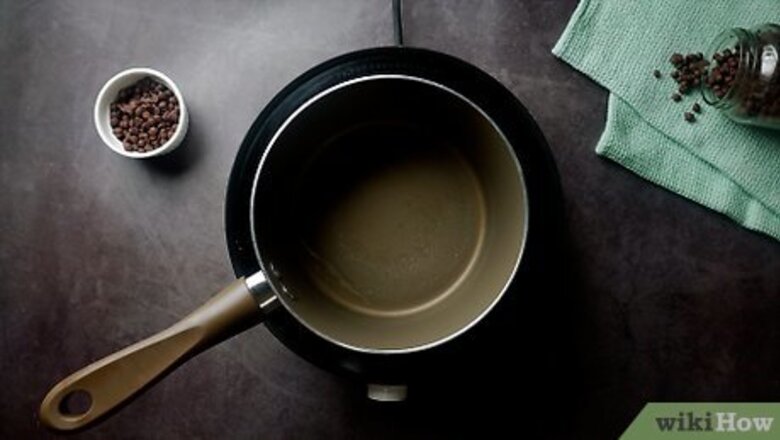
views
- A double boiler and bain marie are actually two different things.
- Use a double boiler to cook sauces or melt chocolate.
- Use a bain marie to bake desserts.
Making a Double Boiler for Sauces and Chocolate
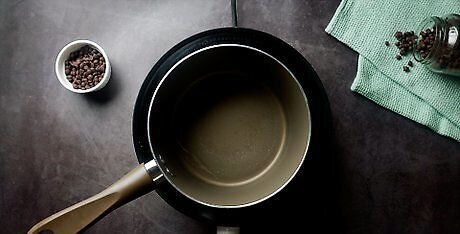
Place a sauce pan on the stove. Choose a medium or large sauce pan to form the base of your double boiler. This should be relatively tall, especially if you'll be using the double boiler for a recipe with a long cooking time.
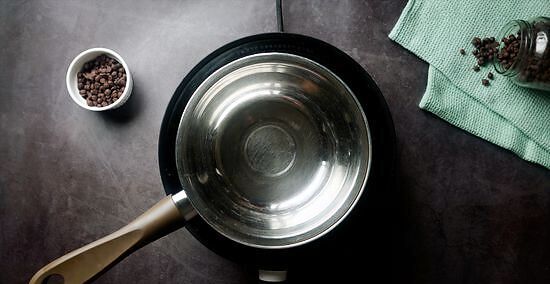
Place a smaller pan or mixing bowl on top. This can be any heat-proof container that fits snugly over the sauce pan, so most of the steam is trapped between them. There should be at least 4 inches (10 cm) of space between the bases of the two containers, and preferably more. Aluminum, copper, and (non-stainless) steel all conduct heat quickly. These will provide the shortest cooking time and prevent hot spots from forming. Stainless steel, heat-proof glass, and ceramic are best if you are cooking acidic ingredients, since they are non-reactive. They conduct heat more slowly, so be sure to stir frequently to avoid hot spots. Glass also makes it easy to check on the water level.
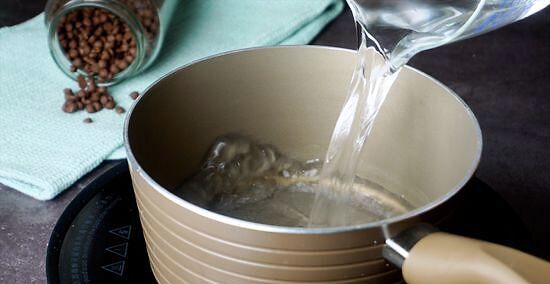
Pour water into the large pan. Set aside the smaller container now that you've confirmed it fits. Fill the larger pan with about 1–3 inches (2.5–7.5 cm) of water, but make sure there is plenty of space between the water and the smaller container. If the two pans fit tightly together and there is not enough space between them, the steam buildup could cause an explosion. Although an explosion is very unlikely, the risk increases for recipes with long cooking times. For these recipes, use containers that do not fit perfectly together, so steam can escape through the gap between them. Lift the pan to allow steam to escape if it starts to rattle. The longer the cooking time your recipe calls for, the more water you'll need.
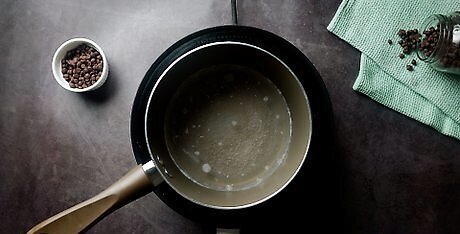
Heat water to a simmer. Place the larger pot on the stove and heat until boiling. Reduce heat to medium-low until the water reaches a steady simmer. Leave the smaller pot on the counter while you wait for the water to boil. If you heat it along with the larger one, the hot surface could burn your ingredients when you add them.
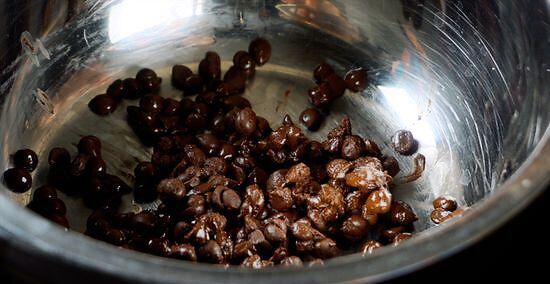
Heat the ingredients in the smaller container. Place your ingredients in the smaller container, then place the container over the simmering pot. Cook as directed in your recipe. Stir the ingredients to ensure they heat evenly. Despite the name, a double boiler should stay at a low simmer. Reduce heat if the water starts to boil, and add a little hot water if it starts to boil low. If the sauce starts to seize up or stick to the pan, just pick up the smaller container and whisk for a minute to reduce the temperature.
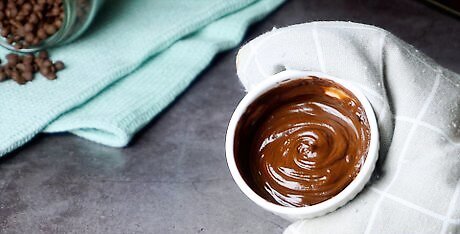
Remove the small container from the heat. Remember that there is trapped steam in the double boiler, and that the base of the small container is very hot. Use pot holders or oven mitts, and tilt the container toward you so steam escapes on the opposite side.
Making a Bain Marie for Baking

Place a large, flat cooking vessel in the oven. Choose a large roasting dish or other oven-safe container with high sides. This should be large enough to hold your smaller dish (or dishes) with about 1–2 inch (2.5–5 cm) of space around the edge, to allow for water circulation. Place this dish in the oven now, as it will be difficult to transport once filled with water. Preheat your oven according to your recipe before you begin this process.
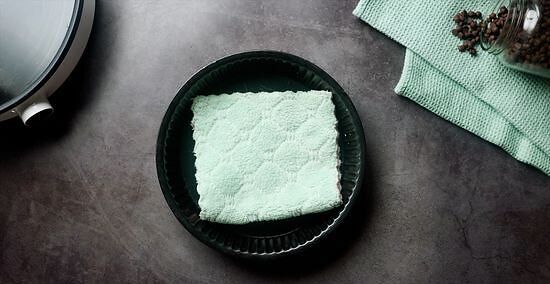
Place a towel or silicone baking mat in the baking dish (optional). Ramekins and other small containers may slide against the surface of the baking dish when you pour in water. A folded towel or a silicone baking mat will help prevent this. This will also provide more insulation, but that is not typically necessary.
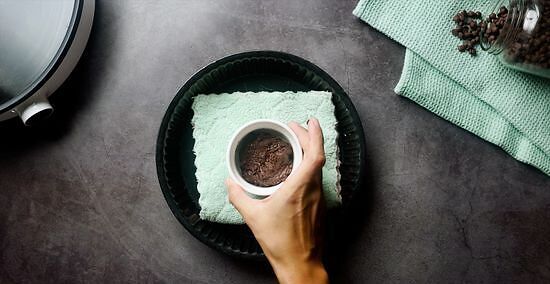
Position the smaller containers in the larger one. Place the pan or ramekins that contain your dish into the large container. If you are using multiple containers, nestle them together in the center to prevent them sliding around. This method is great for custards, flans, cheesecakes and other baked desserts that contain eggs. To prevent a skin forming on smooth custards, cover the small containers with foil.
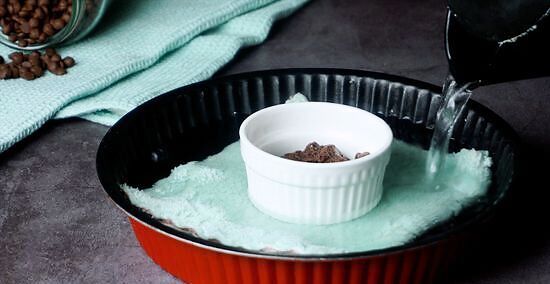
Pour hot water around the sides of the bain marie. Heat water to boiling and pour it carefully into the larger pan, until it reaches ⅓ to ½ of the way up the sides of the smaller containers. Pour slowly to avoid splashing water into your food. If available, pour from a kettle or measuring cup spout.

Heat until the water simmers. Follow the baking instructions for your recipe, but check on the bain marie frequently. The water should be barely simmering. If it starts to boil, reduce the oven temperature. If the water level gets low during cooking, pour in hot tap water to replenish it.

Remove the smaller containers carefully. Tongs coated in silicone or rubber make it easy to remove the hot ramekins. You can improve a pair by wrapping wide rubber bands around metal tongs, or just remove the containers carefully with pot holders. Open the oven and leave the larger container there until it's cooled enough to touch.
Making a Bain Marie for Keeping Food Warm
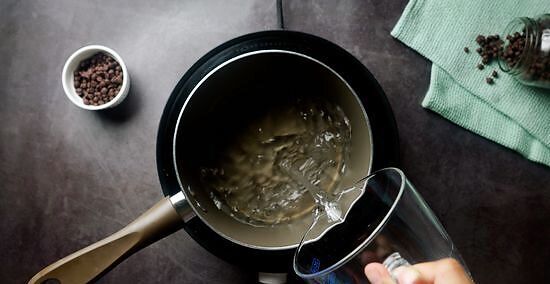
Fill a large sauce pan partway full of water. This type of bain marie — the French word for "water bath" — provides gentle heat to a soup, sauce, or other dish while you're waiting to serve it. A tall stock pot or other cylindrical pan is best for this purpose. Fill it ¼ to ½ full of water, or enough to reach halfway up the side of the smaller container.
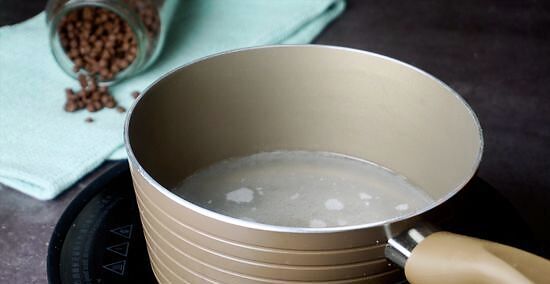
Bring water to a simmer. Heat to a rolling boil, then reduce until the water is simmering.
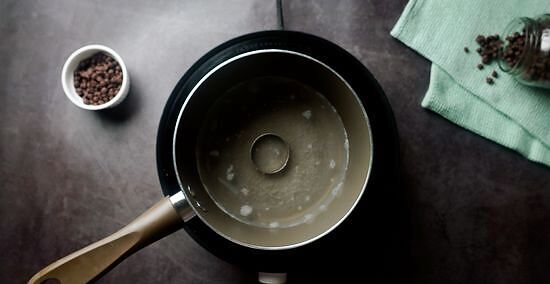
Place a metal ring at the base of this pan. Unlike a double boiler, a bain marie does not require a snug fit between the two pans. A metal pastry ring at the base of the pan can support a small container. If you are keeping several small dishes warm, you can even use one large sauce pan for all them, placing each on its own supporting ring. Alternatively, fold a towel and place it on the base of the large pan. This will insulate the food even better than water alone, and keep small containers from rocking back and forth.
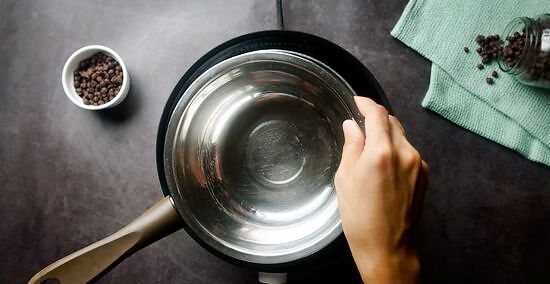
Place the smaller container inside the larger one. The water should reach partway up the sides of the small container, but not enough to spill over the top. Leave the food to warm until ready to serve.




















Comments
0 comment